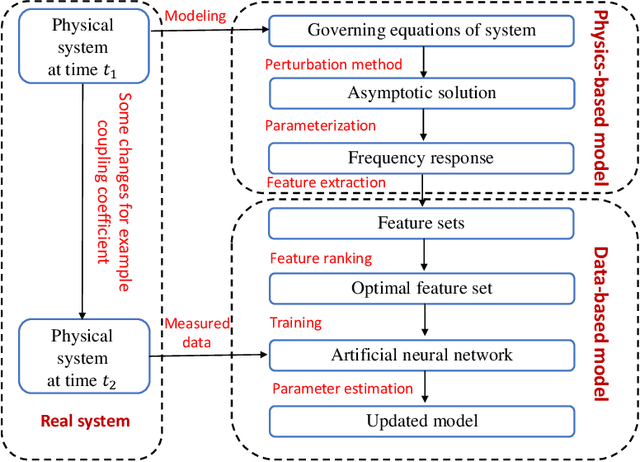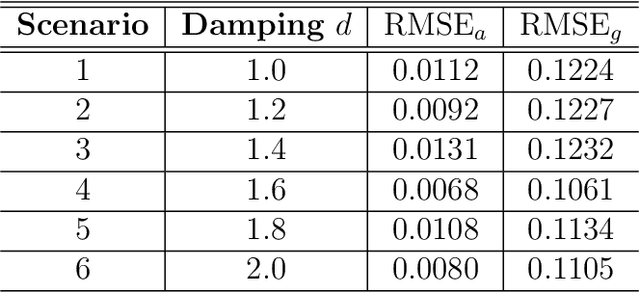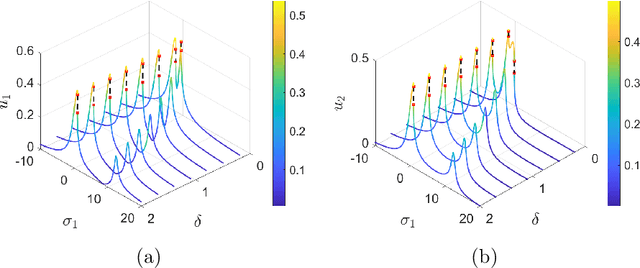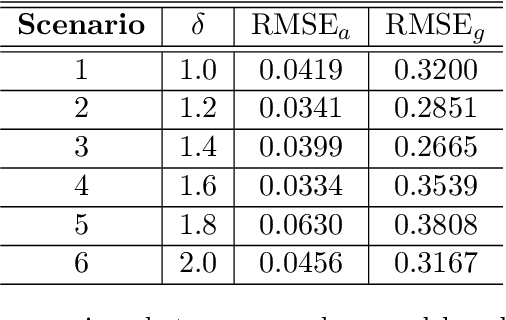C. Nataraj
Hybrid Adaptive Modeling using Neural Networks Trained with Nonlinear Dynamics Based Features
Jan 21, 2025



Abstract:Accurate models are essential for design, performance prediction, control, and diagnostics in complex engineering systems. Physics-based models excel during the design phase but often become outdated during system deployment due to changing operational conditions, unknown interactions, excitations, and parametric drift. While data-based models can capture the current state of complex systems, they face significant challenges, including excessive data dependence, limited generalizability to changing conditions, and inability to predict parametric dependence. This has led to combining physics and data in modeling, termed physics-infused machine learning, often using numerical simulations from physics-based models. This paper introduces a novel approach that departs from standard techniques by uncovering information from nonlinear dynamical modeling and embedding it in data-based models. The goal is to create a hybrid adaptive modeling framework that integrates data-based modeling with newly measured data and analytical nonlinear dynamical models for enhanced accuracy, parametric dependence, and improved generalizability. By explicitly incorporating nonlinear dynamic phenomena through perturbation methods, the predictive capabilities are more realistic and insightful compared to knowledge obtained from brute-force numerical simulations. In particular, perturbation methods are utilized to derive asymptotic solutions which are parameterized to generate frequency responses. Frequency responses provide comprehensive insights into dynamics and nonlinearity which are quantified and extracted as high-quality features. A machine-learning model, trained by these features, tracks parameter variations and updates the mismatched model. The results demonstrate that this adaptive modeling method outperforms numerical gray box models in prediction accuracy and computational efficiency.
Predicting Mortality and Functional Status Scores of Traumatic Brain Injury Patients using Supervised Machine Learning
Oct 27, 2024Abstract:Traumatic brain injury (TBI) presents a significant public health challenge, often resulting in mortality or lasting disability. Predicting outcomes such as mortality and Functional Status Scale (FSS) scores can enhance treatment strategies and inform clinical decision-making. This study applies supervised machine learning (ML) methods to predict mortality and FSS scores using a real-world dataset of 300 pediatric TBI patients from the University of Colorado School of Medicine. The dataset captures clinical features, including demographics, injury mechanisms, and hospitalization outcomes. Eighteen ML models were evaluated for mortality prediction, and thirteen models were assessed for FSS score prediction. Performance was measured using accuracy, ROC AUC, F1-score, and mean squared error. Logistic regression and Extra Trees models achieved high precision in mortality prediction, while linear regression demonstrated the best FSS score prediction. Feature selection reduced 103 clinical variables to the most relevant, enhancing model efficiency and interpretability. This research highlights the role of ML models in identifying high-risk patients and supporting personalized interventions, demonstrating the potential of data-driven analytics to improve TBI care and integrate into clinical workflows.
Neural Network Verification through Replication
Jul 25, 2020



Abstract:A system identification based approach to neural network model replication is presented and the application of model replication to verification of fundamental, single hidden layer, neural network systems is demonstrated. The presented approach serves as a means to partially address the problem of verifying that a neural network implementation meets a provided specification given only grey-box access to the implemented network. The procedure developed involves stimulating a neural network with a chosen signal, extracting a replicated model from the response, and systematically checking that the replicated model is output-equivalent to a specified model in order to verify that the grey-box system under test is implemented to specification without direct access to its hidden parameters. The replication step is introduced to provide an inherent guarantee that the stimulus signals employed yield sufficient test coverage. This method is investigated as a neural network focused nonlinear counterpart to the traditional verification of circuits through system identification. A strategy for choosing the stimulus is provided and an algorithm for verifying that the resulting response is indicative of a specification-compliant neural network system under test is derived. We find that the method can reliably detect defects in small neural networks or in small sub-circuits within larger neural networks.
 Add to Chrome
Add to Chrome Add to Firefox
Add to Firefox Add to Edge
Add to Edge